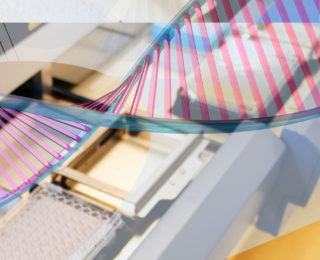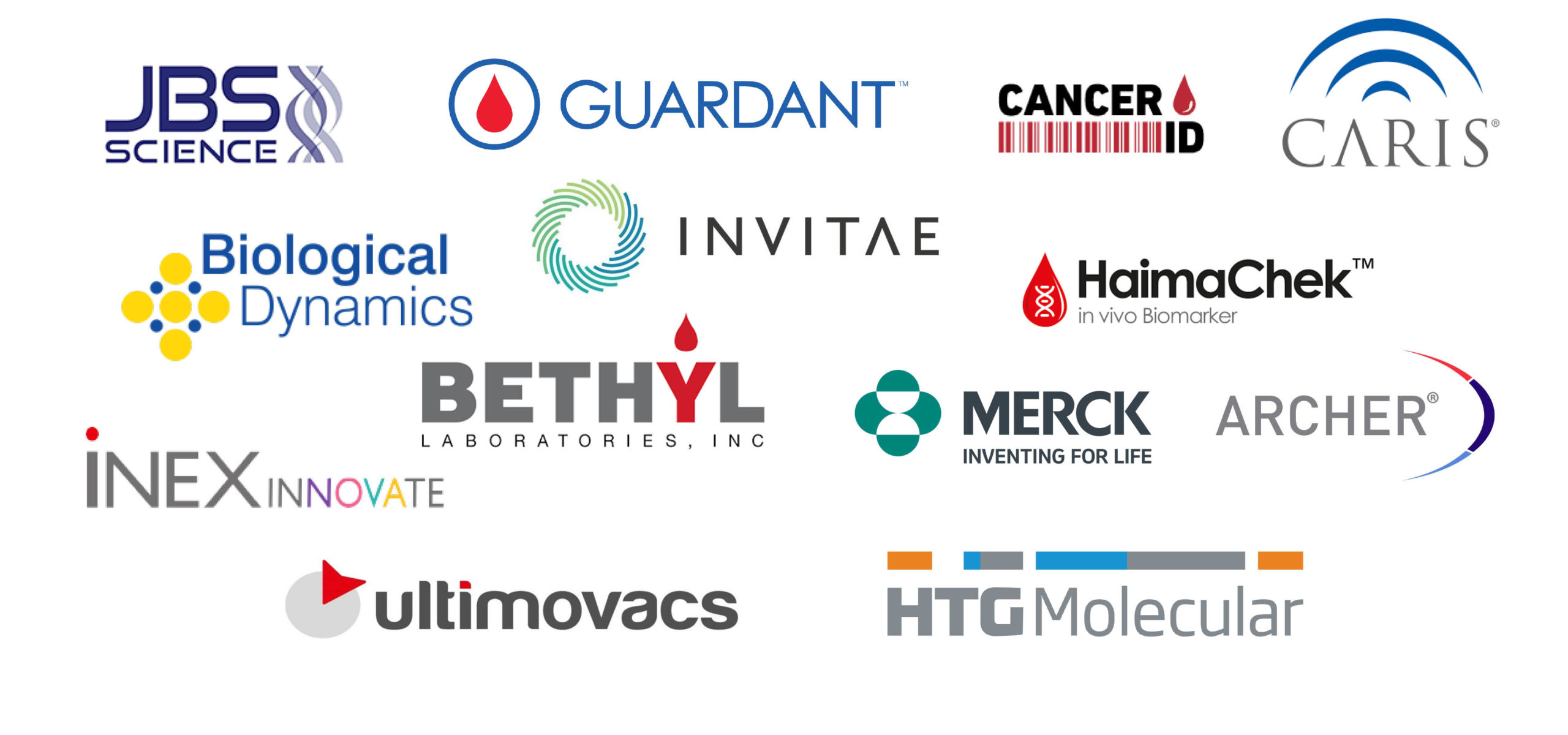General Sequencing Services
Transcriptomics and Spatial Profiling
mRNA-Seq (Poly-A Capture)
Accurate measurement of gene and transcript abundance, detecting both known and novel features in coding and multiple forms of noncoding RNA. Comprehensive analysis and discovery of alternative transcripts, gene fusions, and allele-specific expression.
- Acceptable Sample Format:FFPE, frozen tissue, cell lines, lower integrity/quality samples.
- Minimum Input Requirement:1-1000 ng purified RNA.
Total RNA-Seq (rRNA Depletion)
Analysis of the transcriptome with mRNA-focused sequencing enables characterization of gene expression, gene fusions, alternative splicing, and novel transcripts through the enrichment of polyadenylated mRNA.
- Acceptable Sample Format:Frozen tissue, cell lines, cell pellet.
- Minimum Input Requirement:25-1000 ng high-quality total RNA.
Single Cell RNA-Seq
mRNA array offers 10X resolution at the cellular level for high-resolution analysis of gene expression at the cellular level.
- Acceptable Sample Format:Cells or nuclei.
- Minimum Input Requirement:2k-20k cells.
NanoString GeoMx Digital Spatial Profiling
Flexible and scalable spatial analysis of microenvironments using the only automated, scalable technology capable of non-destructive profiling expression of RNA and protein across distinct tissue compartments and cell populations. Transcriptome quantification, custom markers, 18,000+ genes expression in spatial context.
- Acceptable Sample Format:Antibody protein, FFPE tissue sections. AOI and ROI Ab imaging based.
Genomics and Epigenomics
Whole Exome-Seq
Targeted analysis of coding regions in the genome, providing a cost-effective alternative to whole genome sequencing. Exome sequencing captures 50 Mbp of coding exonic regions with high specificity and coverage for both human and mouse genomes..
- Acceptable Sample Format:FFPE, cell pellet, frozen tissue.
- Minimum Input Requirement:1000 ng gDNA.
CUT&RUN
A groundbreaking strategy for ultra-sensitive genomic mapping of chromatin targets, offering a more robust approach for chromatin mapping compared to ChIP-Seq with lower cell requirements, enhanced signal-to-noise, and a streamlined workflow.
- Acceptable Sample Format:CUT&RUN enriched DNA: cell lines, blood, PBL.
- Minimum Input Requirement:0.5-5 ng CUT&RUN enriched DNA (5 ng recommended).
CUT&Tag
Based on ChIP principles while addressing ChIP limitations, CUT&Tag investigates genomic localization of histone modifications and transcription factors to identify protein-DNA interactions or DNA binding sites for proteins of interest. Unlike ChIP-Seq, live permeabilized cells or isolated nuclei serve as starting material.
- Acceptable Sample Format:Freshly isolated, unfixed (i.e. native) nuclei.
- Minimum Input Requirement:100k nuclei per reaction recommended.
ATAC-Seq
Simple and scalable assessment of chromatin accessibility across the genome and how it may be altered by perturbation or disease, requiring a relatively small number of cells.
- Acceptable Sample Format:cfDNA/plasma, FFPE/frozen tissue.
- Minimum Input Requirement:500-2500 viable cells.
miRNA-Seq
Efficient, instrument-free gene expression technology for targeted measurement of miRNA expression across various sample types, without the need for extraction. Highly reproducible results ensure precise, reliable data.
- Acceptable Sample Format:FFPE, cell lines, plasma.
- Minimum Input Requirement:5 µm FFPE sections, 1k-4k cells, 13-30 µL plasma.
Instruments
Sequencing Platforms
Illumina NextSeq 2000
NextSeq 2000 systems simplify workflows while boasting superior performance and expanded applications for benchtop sequencing. Equipped with XLEAP-SBS chemistry and onboard informatics, NextSeq 2000 generates between 100 million-1.8 billion single reads per run.
Illumina MiSeq
Ideal for small scale projects with rapid turnaround time, a single run using MiSeq can generate 1-25 million single reads in a matter of hours.
Quality Control
Qubit 4 Fluorometer
Accurate and quick measurement of the concentration of DNA, RNA, or protein in a single sample.
Agilent 2100 BioAnalyzer
An established electrophoresis solution integrating an instrument, data processing software, reagents, and a microfluidic chip specific for DNA, RNA, or protein quality control.
Agilent TapeStation 4200
A high-throughput automated electrophoresis platform for fully automated, easy, and reliable quality analysis of DNA and RNA samples.
Sample Requirements
2025 SJCI Assays
Assays |
Sample Formats and Input |
Recommended read/sample |
A. Genomics |
||
| Whole Exome Sequencing (WES) | FFPE sections, cell pellet, frozen tissue (?1000ng gDNA), PBMC | 30M Paired-End |
| Whole Genome Sequencing (WGS); 30x human genome coverage | Cell line, frozen tissue, PBMC | 30X/90G |
B. Epigenomics |
||
| Infinium MethylationEPIC v2.0 - No Restoration*** >950K genes (Non-coding inclusive) | Frozen tissue, FFPE, cell line (250ng DNA), PBMC | *** |
| CUT&RUN**; DNA | Cell line, blood, PBMC, require spike-in controls (0.5-5ng DNA) | Histone: 8M\nTranscription Factors: 25M |
| CUT&TAG** | Cell line, tissue (100k nuclei), PBMC | 8M |
| CUT&Tag-IT R-loop | Fresh or cryopreserved cells (38k-500k cells), PBMC | 25M |
| ATAC-Seq | Viable cells (500-5k cells), PBMC | 30M Paired-End |
C. Transcriptomics |
||
| Illumina mRNA-Seq | Frozen Tissue/Cell Line/PBMC (25-1000ng high-quality total RNA?) | 25M Paired-End |
| Illumina Total Transcriptomic RNA-Seq Ribosomal depletion | FFPE tissue section (1-1000ng purified RNA) | 30M Paired-End |
| SMART-Seq V2 (FFPE) (Deep Seq) | FFPE tissue section | 10-20M |
| SMART-Seq V4 (Deep Seq) | FFPE tissue section | 5-10M |
| Targeted Gene-fusion RNA-Seq; profiling 507 fusion-tumor-associated genes | FFPE/Frozen Tissues, PBMC, and Cell line (10ng total RNA, 20?100ng FFPE RNA) | ~5M |
| Single cell/nuclei 10x genomics 5' RNA kits | Cells/nuclei, >80% viable, cryopreserved | 20,000+ reads per input cell |
| Nanostring GeoMX | Cancer Transcriptomic Atlas (CTA), 1800 genes**** | Ab protein, RNA from FFPE tissue sections | Recommended 30 reads per ?m^2 |
| Nanostring GeoMX | Whole Transcriptomic Atlas (WTA), 18k genes**** | Ab protein, RNA from FFPE tissue sections | Recommended 100 reads per ?m^2 |
|
** CUT&RUN and CUT&TAG are offered as replacements for ChIP-Seq
****GeoMX CTA / WTA costs includes GeoMX morphology marker set kits (Tumor TME Morphology Kit ; PanCK, CD45, nucleiar stain or Melanoma TME Morphology Kit; S100B/PMEL17, CD45, and a nuclear stain) Customizable depending on study design, Bioinformatics may be discussed General standard cost, deviations will be adjusted accordingly: 48 AOI on one slide *** Additional cost for poor quality FFPE tissue sections nucleic acids as restoration may be required Preliminary bioinformatic analysis will be provided through discussion All sequencing data will be returned through BaseSpace and will be stored temporarily QC : All costs cover quantification and quality check RNA or DNA of specimen and QC of NGS |
||
Submission Details
Quality of starting material is a key factor in producing informative sequencing data and results. Samples must pass specific quality control requirements before they may be processed for sequencing. Pricing will depend on the assay type, number of samples to be processed, sequencing read depth, read length, run mode, and desired turn-around time.
To request sequencing services, consultation, or sample requirements and pricing specific to your project, please submit an inquiry form. Please allow a short time for your inquiry to be processed.








